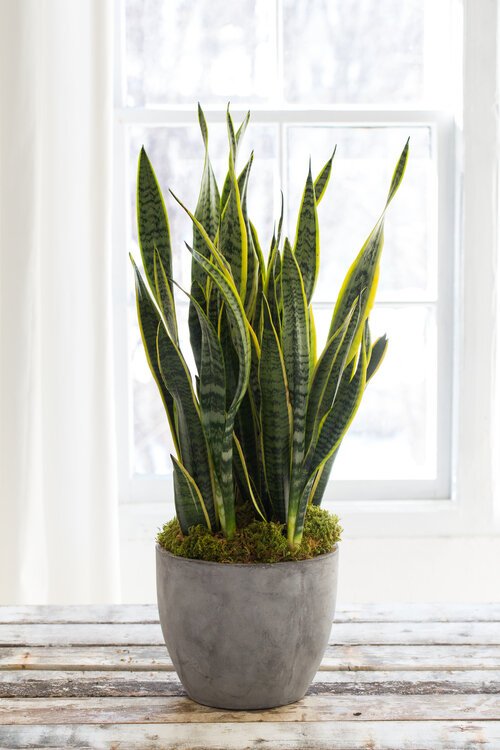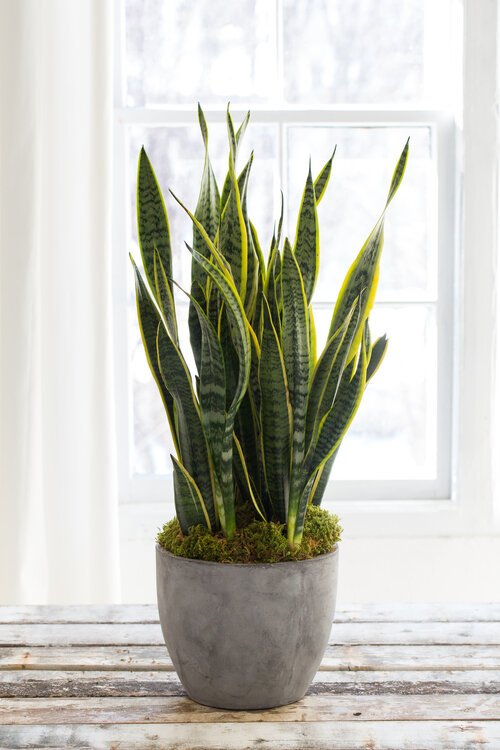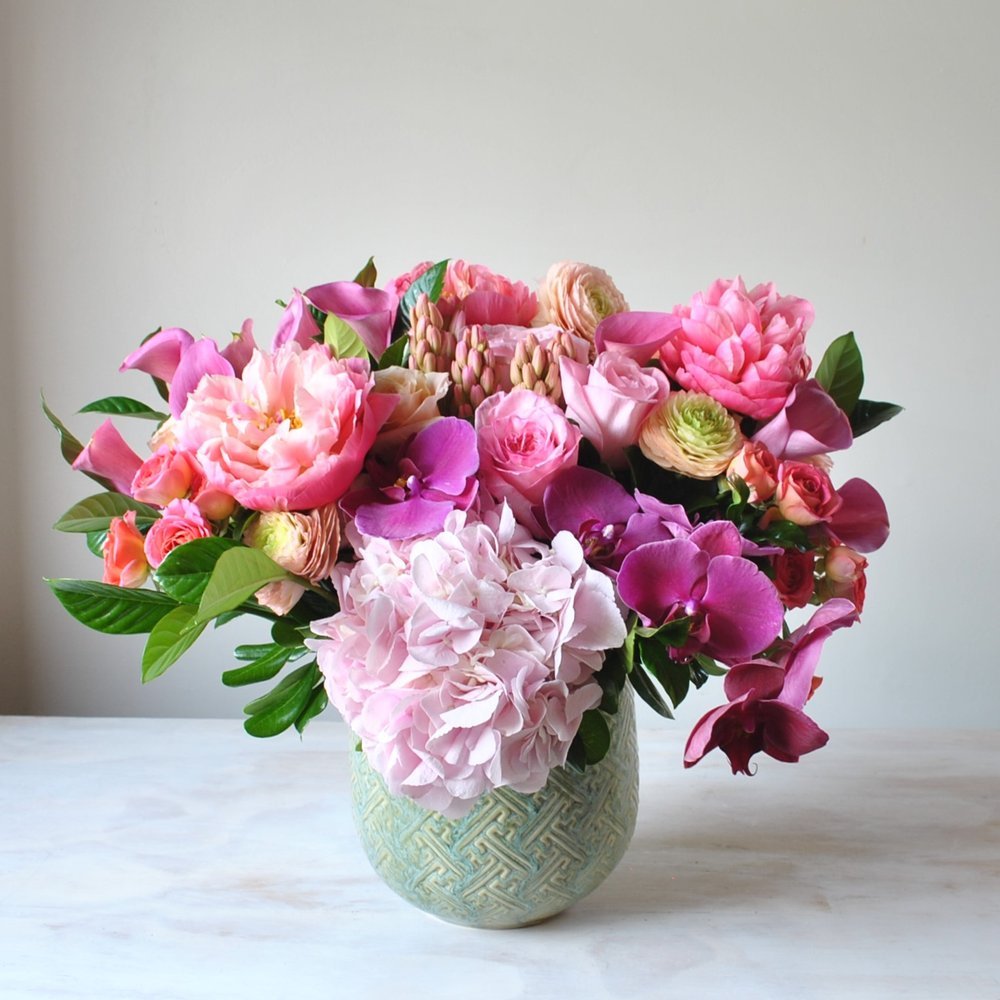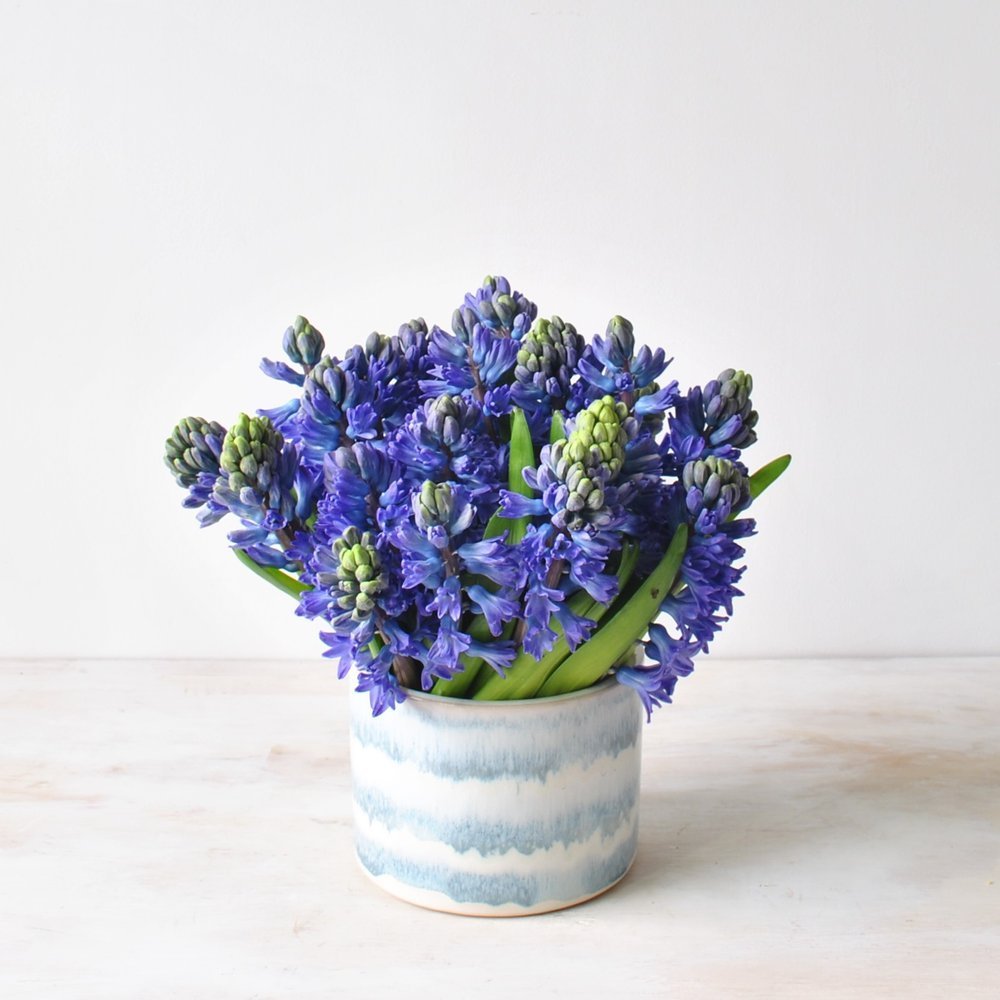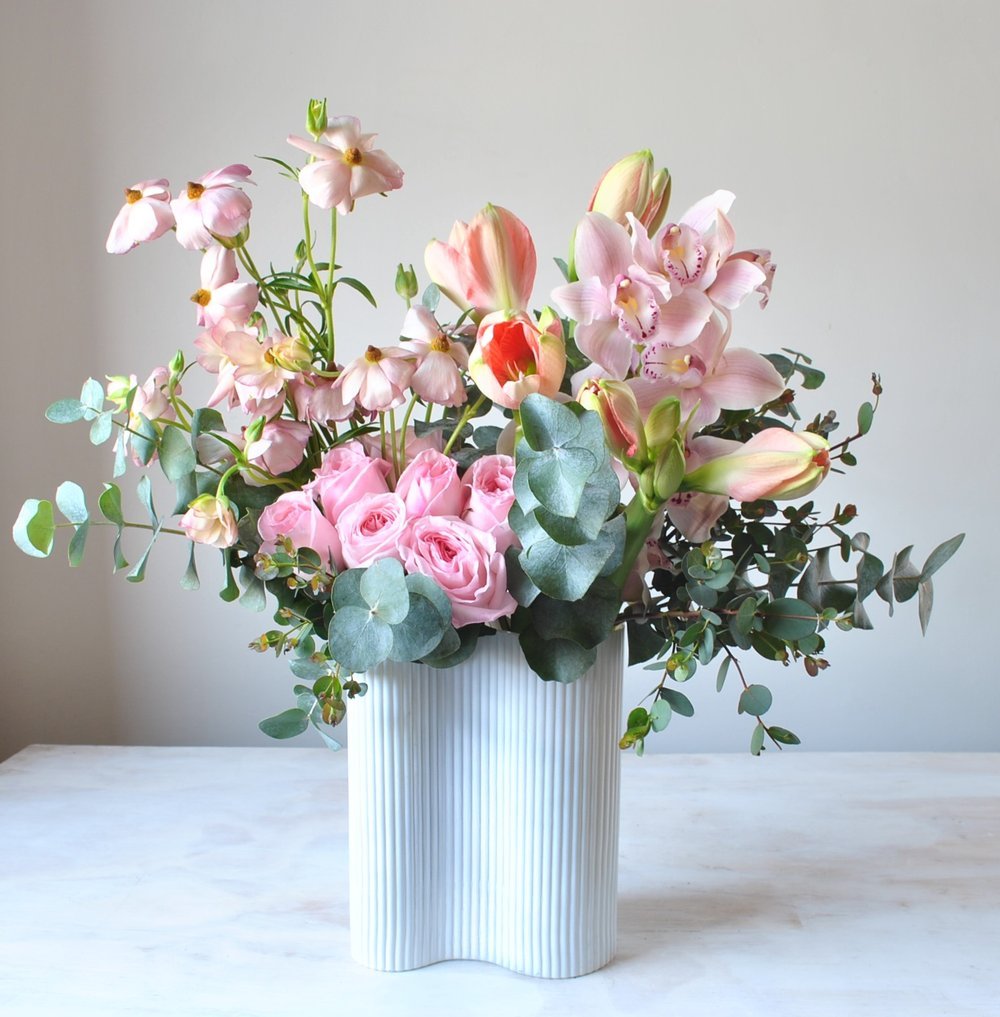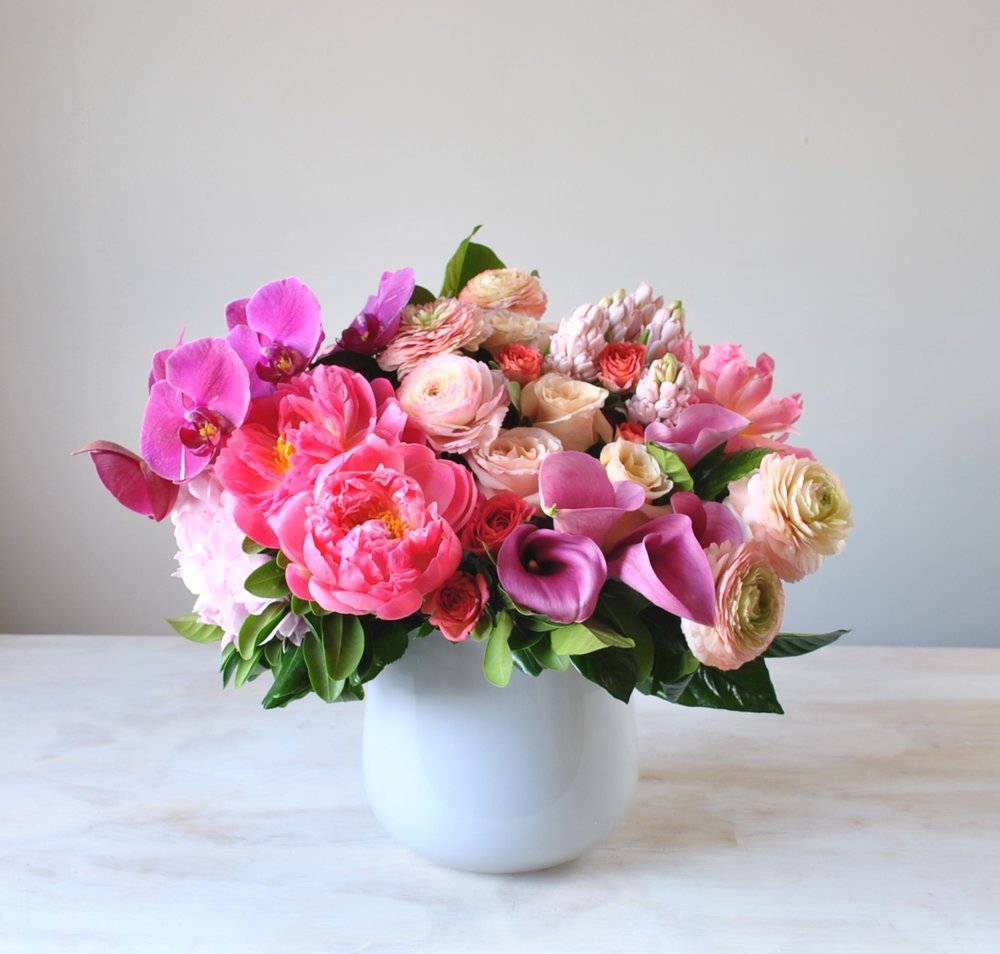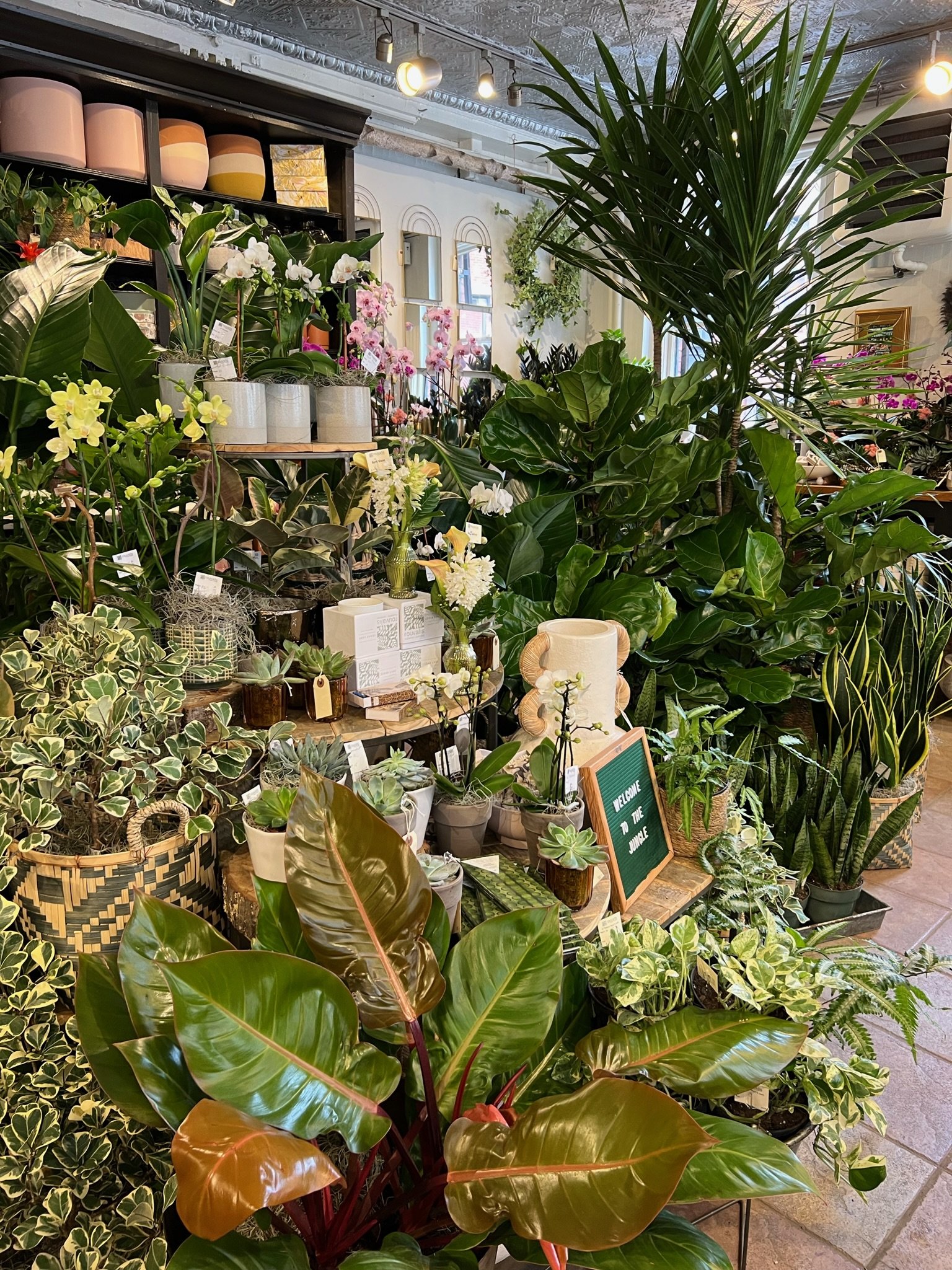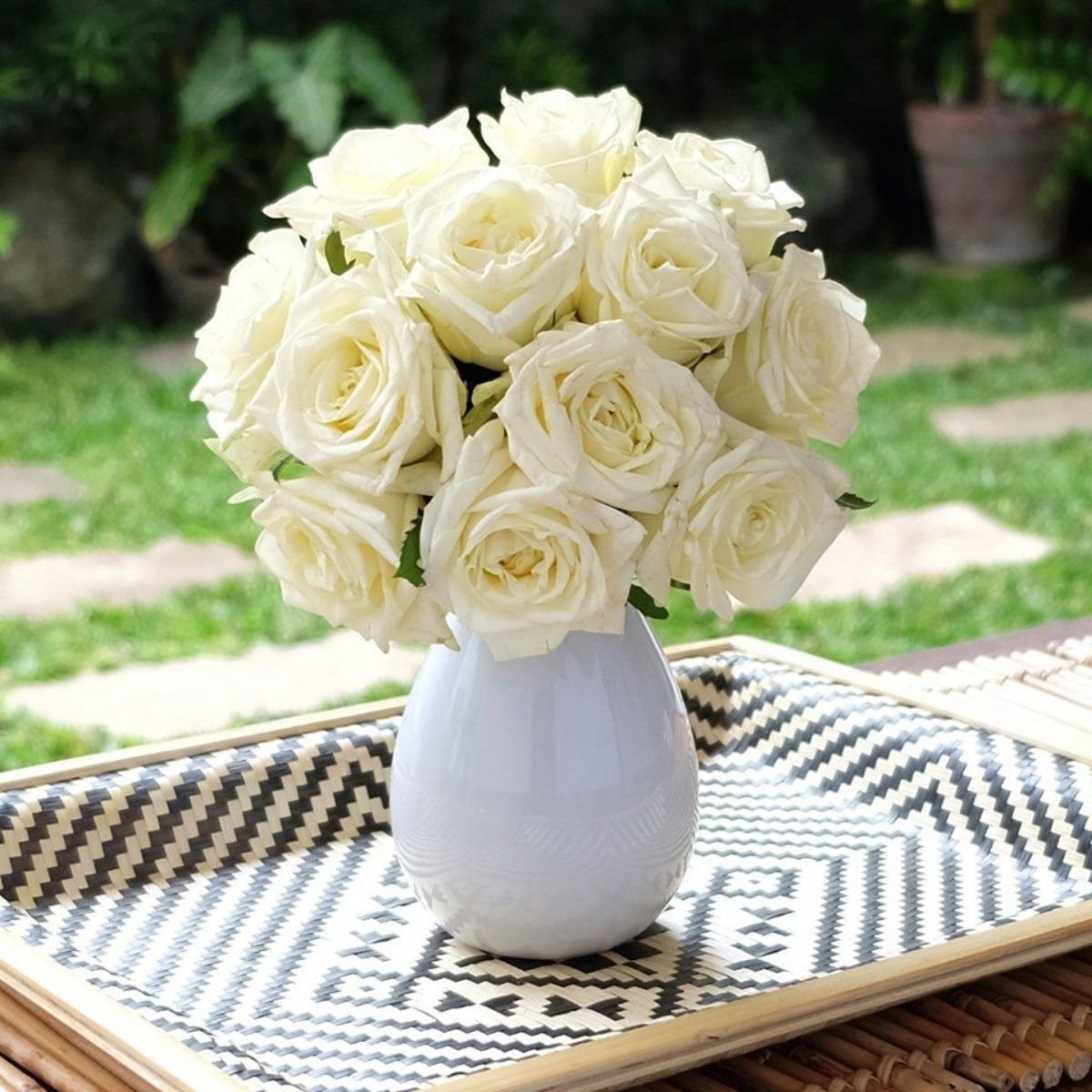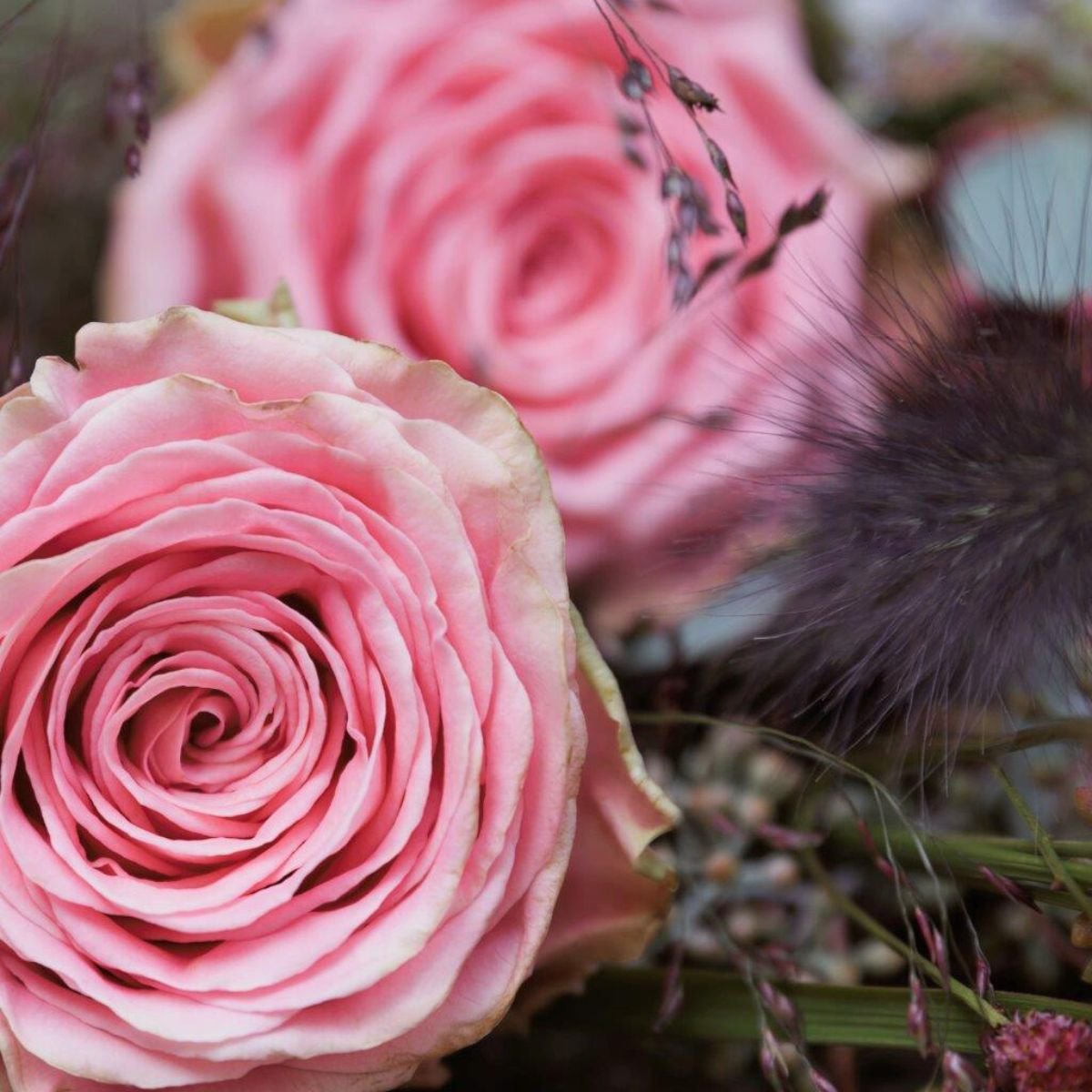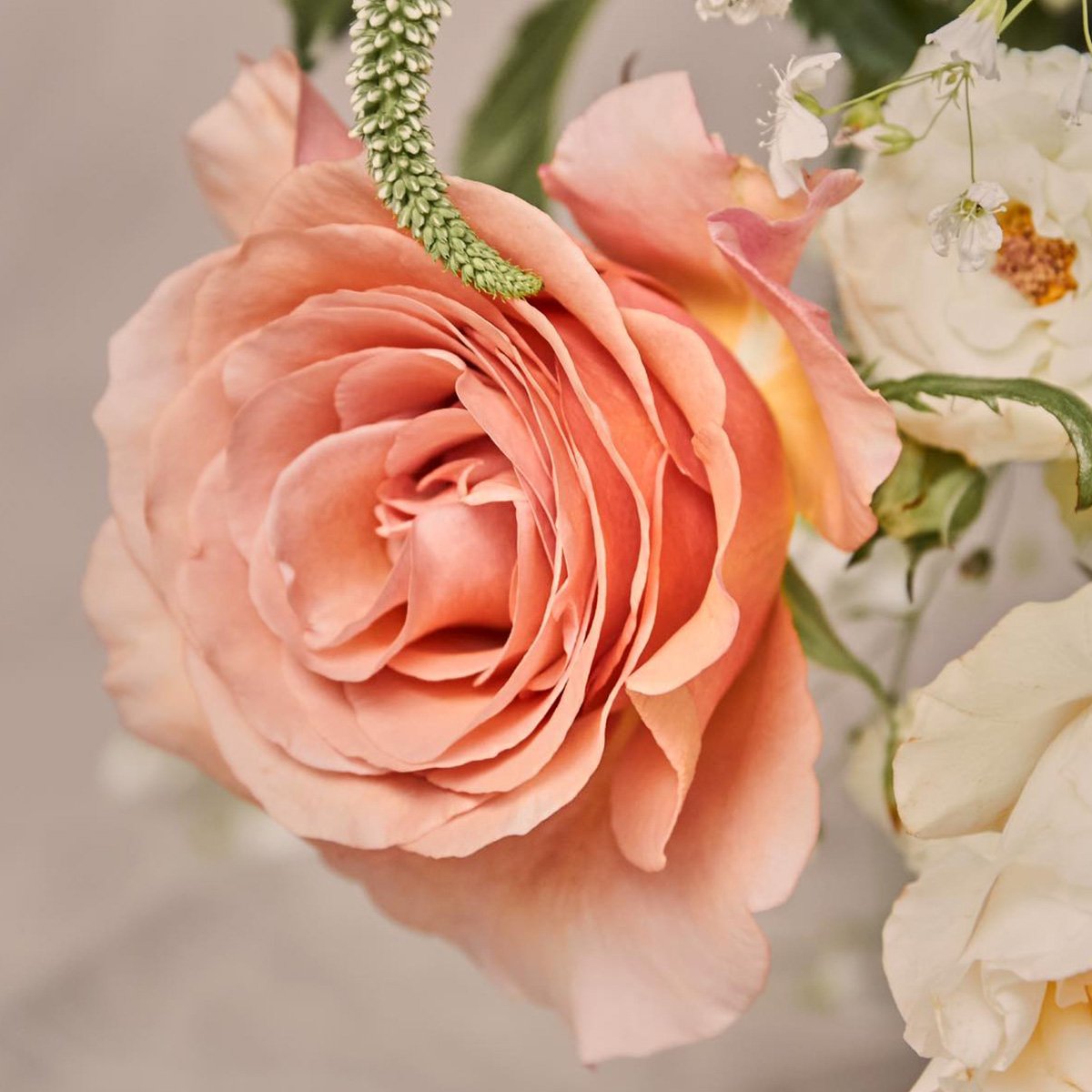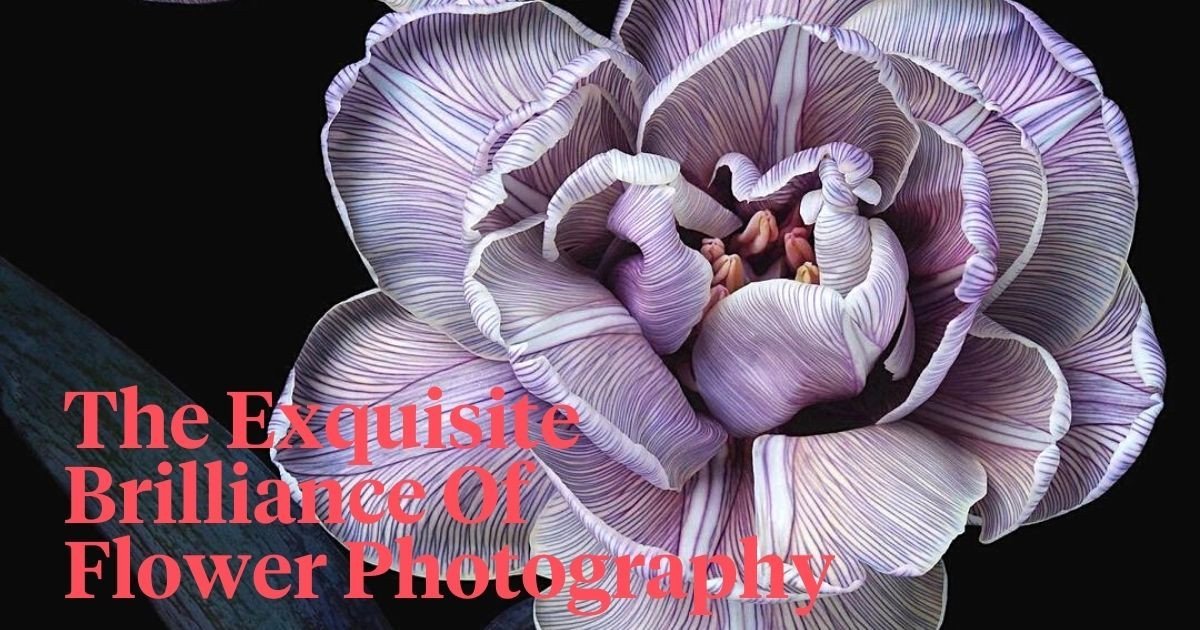How Warm or Cool Should Your Home Be if You Want to Grow Flowers Indoors?
CommentEverything you need to know about temperature for your house plants from Thursd.! Enjoy this quick read!
To grow indoor flowers successfully, maintain a temperature range of 60-75°F, with some varieties requiring cooler temps. Proper humidity and light levels are also crucial for optimal growth.
By: THURSD | 12-05-2023 | 4 min read
Whether you're a seasoned plant parent or just getting started, one of the most important factors to consider when growing flowers indoors is the temperature of your home.
Indoor flowering plants are sensitive to temperature changes, and finding the right balance can mean the difference between thriving plants and a wilting mess. In this guide, we'll explore how warm or cold your home should be for optimal indoor plant growth and share tips for creating a suitable environment for your leafy friends.
Best Temperature to Grow Indoor Plants: Learn the Basics
One of the most important factors to consider when growing plants to decorate your home is the temperature of the environment. Different plants have different temperature requirements, so it's essential to understand the basics.
For example, tropical flowering plants thrive in warm and humid conditions, while succulents prefer dry and warm environments. Generally, most indoor flowering plants prefer a temperature range of 60-75°F (15-24°C) during the day and 55-65°F (13-18°C) at night.
By understanding the temperature requirements of your flowers, you can create an environment that will promote healthy growth and development.
Keeping Your Plants Safe From Temperature Fluctuations
Temperature fluctuations can be harmful to your flowers, so it's important to take steps to keep your plants safe from sudden temperature changes. Here are some simple tips you can follow:
Place your flowers away from doors and windows that may let in cold drafts or hot sun.
Consider using curtains or shades to regulate the amount of sunlight and temperature that enters the room.
Use a thermometer to monitor the temperature around your plants, and adjust accordingly if necessary.
If you have a central heating or cooling system, make sure the vents are not blowing directly onto your flowers.
If you live in an area with harsh winters, consider investing in a space heater for the room where your plants are located.
Learn when it’s time to bring your outdoor plants indoors.
By following these simple steps, you can help ensure that your indoor plants stay healthy and thrive despite any temperature fluctuations that may occur in your home environment.
Creating the Best Indoor Environment for Your Plants: 4 Essential Tips
Besides shielding your flowers from temperature fluctuations, there are extra steps that you can take to create the perfect indoor environment for your plants. Let’s look at these tips below.
Consider Installing a New AC System
If you live in a hot climate and want to maintain a comfortable indoor temperature for your flowers, installing an AC unit is a great option. By partnering with specialized AC installation services, you can select the right system for your needs and choose the best location for the unit.
Learn About Each Flowering Plant’s Needs
Different plants have different needs. For example, succulents thrive in temperatures as high as 70-80° F while subtropical and tropical species will need indoor temps to stay above 40-60° F.
Knowing this can help you create an ideal growing environment for your indoor flowers and avoid any potential stress or damage caused by extreme temperatures.
Learn to Identify the Signs of Temperature Problems
If you are new to indoor plant care, it can be difficult to identify the signs of temperature-related problems. However, with a little bit of knowledge and observation, you can learn to recognize these issues and take steps to correct them before they cause lasting damage.
One common sign of temperature problems is wilting, drooping, yellowing, or browning leaves. This can occur when plants are exposed to temperatures that are too high or too low for their specific needs.
In addition, if your plants are not growing as quickly as they should be or are producing fewer flowers than usual, this may also indicate a problem with temperature regulation.
Keep an Eye on Other Variables (i.e.: Humidity and Sun Exposure)
Aside from temperature, watering schedule, and soil quality, other important variables can impact the health of your indoor plants. Humidity levels and sun exposure, for example, can greatly affect how well your plants thrive. Some species prefer higher humidity levels and sunnier environments while others do better in drier and darker rooms.
If you are unsure about the best type of plant for your needs, consulting an expert can help you find the best species for your climate and expertise level.
8 Celebrities Reveal Their Favorite Houseplants
CommentHere’s another great read from Thursd.! about some top celebrities favorite houseplants. Enjoy!
Celebrities, they're just like us - they love houseplants and these are the ones they love most!
By: THURSD. | 17-05-2023 | 7 min read
Houseplants have become a beloved trend in recent years, bringing a touch of nature into our homes and providing a range of benefits, from improved air quality to mental health benefits. With their unique beauty and varied forms, houseplants have captured the hearts of people around the world, and their popularity only continues to grow, and are even adored by very popular celebrities worldwide.
8 Celebrities and Their Favorite Houseplants to Have at Home
As you may already be aware, houseplants offer a way to connect with nature and bring a sense of calm and tranquility into our homes. With the increasing urbanization and technology-driven lifestyles, houseplants have emerged as a way to reconnect with the natural world and bring a bit of greenery into our daily lives. Studies have shown that having plants in our homes can help reduce stress and anxiety, improve productivity and focus, and promote relaxation. Read the article 'These Are the Trending Houseplants for 2023' to know what other houseplants are taking over this year!
These are only some of the few reasons why even worldwide celebrities love having houseplants at home and you're about to know 8 of them and their favorites to have indoors.
1. Gigi Hadid - Snake Plant
To start off the list of houseplants that celebrities love we have the Snake plant, a very popular choice among plant lovers around the world. The snake plant (Sansevieria trifasciata) is a popular choice among celebrities, including Miranda Kerr and Gigi Hadid.
This plant is known for its sleek, upright leaves and is easy to care for, making it a great option for beginners. It can thrive in low-light conditions and doesn't need to be watered frequently, so it's perfect for those who don't have a green thumb.
2. Kelly Ripa - Succulents
Kelly Ripa is a fan of succulents, which are known for their low-maintenance and drought-resistant qualities. She often shares photos of her succulent collection on social media and has even given them as gifts to her co-hosts on 'Live with Kelly and Ryan'.
For Kelly Ripa, succulents are her favorites as they are easy to care for, require minimal watering, and can thrive in a wide range of indoor environments. Secondly, they come in a variety of shapes, sizes, and colors, making them a versatile and attractive addition to any home decor. Many succulent species have air-purifying properties, helping to remove toxins from the air and improve indoor air quality. Finally, succulents are known for their ability to propagate easily, making them a great option for plant enthusiasts who want to grow their collection without having to purchase new plants.
3. Jennifer Aniston - Bird of Paradise
The Bird of Paradise houseplant, also known as Strelitzia Reginae is a favorite among many celebrities, including Jennifer Aniston and Ellen DeGeneres. This plant is known for its large, tropical flowers that resemble a bird's head and is perfect for adding a pop of color to any space.
However, it requires bright, indirect light and consistent watering, so it's not the easiest plant to care for, but the results are actually incredibly beautiful. Read more about it in the article 'Bird of Paradise - Is the Strelitzia The Queen of the Tropical Indoor Plant World?'.
4. Beyonce - Cacti and Succulents
Beyonce is a fan of cacti and succulents and often shares photos of them on social media. She even created her own line of cacti in collaboration with the plant company 1-800-Flowers. Cacti and succulents are perfect for those who are new to plant parenting, as they require very little maintenance and can thrive in low-light conditions.
5. Miranda Kerr - Orchids
Miranda Kerr is a fan of orchids, which are known for their elegant and delicate blooms. She often shares photos of her orchid collection on social media and even collaborated with the plant company 'The Sill' to create her own line of orchids.
Orchids can be a bit tricky to care for, as they require specific conditions such as high humidity and filtered light, but they're worth the effort for their stunning blooms.
6. Joanna Gaines - Fiddle Leaf Fig Tree
Joanna Gaines is known for her signature farmhouse style, which often incorporates natural elements such as wood and plants. One of her favorite plants is the fiddle leaf fig tree (Ficus lyrata), which she often uses in her designs.
This plant is known for its large, glossy leaves and can add a touch of drama to any space. However, it requires bright, indirect light and consistent watering, so it's not the easiest plant to care for.
7. Michelle Obama - ZZ Plant
The ZZ plant (Zamioculcas Zamiifolia) is a popular choice among celebrities, including Rashida Jones and Michelle Obama.
This plant is known for its glossy, dark green leaves and is extremely low-maintenance, making it perfect for those who are new to plant parenting. It can thrive in low to medium light and doesn't require frequent watering, making it ideal for busy people.
8. Karlie Kloss - Monstera Deliciosa
Monstera Deliciosa is another favorite among celebrities, including Kylie Jenner and Karlie Kloss. This plant is known for its large, tropical leaves and can grow up to 10 feet tall when given the right conditions. It requires bright, indirect light and consistent watering, but the results are worth it - a healthy monstera can transform any room into a lush jungle. There are so many Monstera varieties you'll want to know about, so go ahead and read 'All The Different Types of Monstera Plants You Want To Know About'.
Now that you have an idea of the celeb favorites, it's important to know why houseplants are a great addition to your indoor spaces and how they'll change not only the appearance of your home but also your mood and can have health benefits as well.
Although starting a houseplant journey may not always be easy, here's an article that will help you start the adventure: '5 Houseplants for Beginners That’ll Help You Start Your Plant Journey Right Away'.
Why Else Should You Incorporate Houseplants in Your Home?
In addition to their therapeutic benefits, houseplants are also appreciated for their aesthetic appeal. From the lush, tropical foliage of the Monstera to the delicate petals of orchids, each houseplant offers a unique beauty that can enhance the ambiance of any room. As we spend more time indoors, the importance of creating a comfortable and visually appealing environment has become increasingly clear, and houseplants offer an easy and affordable way to do just that.
Moreover, the COVID-19 pandemic has also contributed to the surge in houseplant popularity, as more people spent time at home, looking for ways to create a comfortable and inviting space. With the rise of remote work and social distancing measures, houseplants offered a way to connect with nature and bring a sense of peace and tranquility into our homes. Read the article '7 Science-Backed Health Benefits of Plants at Home' to know exactly how having plants at home can boost your health.
Houseplants have also become an important part of sustainable living. As more people become aware of the environmental impact of their daily actions, they are looking for ways to reduce their carbon footprint and live a more eco-friendly lifestyle. Houseplants offer a way to do just that, as they help purify the air and reduce the amount of carbon dioxide in our homes.
All New Spring Collection Available for Pick-up or Delivery!
CommentMother's Day Collection Now Live!
CommentMother’s Day is coming fast. Celebrate the Mom’s in your life with beautiful Floral Arrangements. Our Collection is now live for pick-up or delivery May 11th through May 14th, order before we sell out!
Mother Goose
Bright, lush and exuberant! This arrangement features soft pink Dutch hydrangea, fragrant hyacinth & garden roses, Coral Charm peonies, calla lilies, Chimo spray roses, peach ranunculus & Shimmer roses, topped with a rich plum Phalaenopsis orchid stem. Gathered together by our designers in a soft green, textured ceramic container.
Goodnight Moon
Celebrate Mom this Mother's Day with gorgeous fresh floral. Inspired by the classic childrens book this arrangement is soft and whimsical with Magical Dutch Hydrangea, garden roses, fragrant hyacinth and stock, peonies, tulips, clematis and more arranged in a geo smokey blue glass vase.
Once Upon a Time
Say 'Thank you!' to Mom with this stunning statement piece. Fragrant soft pink garden roses, dancing butterfly ranunculus, pink amaryllis blossoms, a light pink cymbidium orchid stem, nestled into an eruption of soft eucalyptus greenery. 'Once Upon A Time' all comes together in a unique, waved, white ridged glass vase.
Who Said Plants Don’t Have Feelings?
CommentPlants are more than just stationary objects that make the world look beautiful. Research has shown that plants are complex organisms that can feel, communicate and respond to their environment. In fact, plants can feel emotions too. This might sound surprising, but it is true. Let's explore this fascinating topic in more detail.
Yes, Plants Have Feelings Too
The idea that plants can feel emotions is not a new concept. It has been around for many years and has been supported by various studies and experiments. One of the earliest experiments was conducted by Cleve Backster, a polygraph expert who in the 1960s, connected a polygraph machine to a houseplant.
He found that the plant responded to his thoughts and emotions, suggesting that it could sense them. It's unbelievable the way plants use the same senses as humans and they can actually feel as well. Just because they cannot communicate the same way as humans (talking), doesn't mean they can't feel emotions.
Humans go around the world using five primary senses: touch, sight, hearing, smell, and taste. These senses aid in the formation of a mental picture of our surroundings, allowing us to respond to any rapid changes. Many animals rely on these senses to avoid being eaten, as well as to find food and safe habitat. What about plants, though?
Plants can detect a lot about their surroundings, which might cause stress. Plants, unlike most humans and animals, cannot flee or hide when threatened by predation, damage, or environmental changes. To survive, 'sessile' (or stalkless) plants developed to be extremely sensitive to their surroundings. Plants may perceive their environment in a variety of ways, including hearing their predators, smelling their neighbors, and even mimicking the morphologies of their plant hosts, according to research.
Studies Have Proved That Plants Have Feelings
Numerous experiments have been conducted, and the evidence shows that plants are indeed capable of feeling emotions. Dr. Kim Johnson, a research fellow in the School of BioSciences, University of Melbourne, studies the world of plant senses and he shares that one of the main ways in which plants communicate and respond to their environment is through chemical signals. They release different chemicals into the air or soil depending on their needs or the presence of certain stimuli. These chemicals can also affect the behavior of other plants and animals in the vicinity.
One of the most fascinating things about plants is their ability to sense danger and protect themselves. For example, when a plant is being attacked by a predator, such as an insect or a herbivore, it can release chemicals that attract the predator's natural enemies, such as birds or parasitic wasps. In this way, the plant is able to defend itself without having to physically move or fight back. Dr. Kim Johnson shares:
"Plants are constantly under environmental stresses. You can actually see how plants respond to those physical stresses because they change their shape."
When plants are under stress, their stress hormones can also signal other plants in the vicinity to prepare for potential stressors. This type of communication is called plant-to-plant communication, and it has been shown to occur through the release of chemicals into the air or soil. But that's not all... keep reading to get immersed into plant feelings and emotions.
Plants Can Feel Through the Five Human Senses
Let's dive deep into how plants can feel through the five human senses.
Touch
When it comes to how plants feel through touch, here are a few examples. Climbing species like sweetpeas (Lathyrus odoratus) seek out support to cling to, whilst other plants like Arabidopsis (Arabidopsis thaliana) become stressed by touch, stunting their growth. Many species stretch their roots across the earth, avoiding rocks and poisonous chemicals.
Some plants even have specialized leaves that detect and respond to specific feelings. Sensitive plants, such as Mimosa pudica, have leaves that fold inwards when touched to protect themselves.
Mimosa Pudica
Another fantastic example is the Venus Flytrap (Dionaea muscipula), which immediately snaps shut (as anyone who has touched one will know). Their traps are comprised of modified leaves that have been carefully designed to catch unsuspecting insects while ignoring trash that accidentally falls in. Miniature trigger hairs cover the surface of these modified leaves. When a hair is touched, a chemical 'timer' within the leaf is set off.
Only when a second hair is touched within this time period will the leaf close and begin digesting the prey trapped within. The leaves are evolved to discern live animals different from trash by requiring a second trigger, ensuring they catch just what they need to survive.
Sound
Up until recently, not much was known about how plants respond to different sounds, but researchers have demonstrated how plants not only 'hear' nearby pollinators and predators, but also prepare themselves for a visit.
Heidi Appel and Reginald Cocroft of the University of Missouri released an outstanding study in 2014. They recorded caterpillars eating on leaves and played them back to uninjured Arabidopsis plants using specialized equipment. Control plants were subjected to recordings of the wind, other non-predator insects, or nothing at all. Plants exposed to the sound of chewing responded by creating the same defense compounds they would produce if they were chewed on.
More recently, a Tel Aviv University study team led by Lilach Hadany revealed beach evening primrose (Oenothera drummondii) was 'listening out' for potential pollinators. The flowers boosted the sugar level in their nectar when a tape of a buzzing bee was played, sweetening in anticipation. While there is no known mechanism for plants to sense these sounds, it's fascinating to consider.
Taste and Smell
Plants produce their own food through photosynthesis, thus they do not require the taste that we recognize. Taste and smell, on the other hand, rely on the detection of chemicals by specialized receptors, implying that they are inextricably linked. Plants use a similar method for a variety of crucial purposes, including locating nutrients in the soil and avoiding roots near hazardous compounds. Plants may even 'sniff' out their neighbors and recognize their relatives.
Sight
While most animals rely heavily on smell to navigate their surroundings, sight is undoubtedly the most crucial human sense. Plants do not 'see' in the manner that we do, but they can detect a wide range of light wavelengths, from ultraviolet to infrared. One of the most well-known instances is immature sunflowers (Helianthus), which exhibit heliotropism, in which the sunflower faces the sun and grows in the direction of the sun. Tracking the movement of the sun allows the plant to maximize the quantity of sunlight it receives for photosynthesis.
Other Ways in Which Plants Feel
So, how do we know that plants can feel emotions? While plants do not have a nervous system like animals, they do have a system of cells that can transmit electrical signals. This system, known as the plant electrical signaling system, allows plants to communicate with each other and respond to their environment. In fact, some researchers have suggested that this system is analogous to the nervous system in animals.
Another way in which plants can feel emotions is through their ability to form memories. Just like animals, plants can remember past experiences and use that information to respond to future stimuli. For example, if a plant is exposed to a certain type of stress, such as drought or heat, it can remember that experience and adjust its response to future stressors. This type of memory is called 'priming', and it has been shown to occur in many different plant species.
In addition to being able to sense danger and form memories, plants are also capable of responding to other stimuli, such as light. For example, when a plant is exposed to light, it can adjust its growth and development in response to the quality and intensity of the light. This is why plants are grown indoors under artificial light often look different than those grown outdoors in natural light.
More incredibly, when wounded or under attack by pathogens, plants produce their own anesthetic compounds, which act to lessen their injuries. The plant experience, although seemingly inanimate, is complex and ever-changing. Whether they’re listening out for friends or foes, reaching out for the family, building communities, or hiding from predators, plants are highly attuned to their environment and constantly reacting.
Furthermore, studies have shown that plants respond differently to different types of stimuli, suggesting that they are capable of experiencing different emotions. How fascinating are plants?
Top 10 Roses for Mother's Day 2023
CommentMother’s Day is coming up fast, here’s the top roses from Thursd!. for this 2023 holiday!
These are 10 of the most amazing roses to gift on Mother's Day! Take note because they're about to conquer your mom's hearts and eyes.
By: THURSD. | 05-04-2023 | 8 min read
Mothers are someone you can always turn to, no matter how old you are or where you are in the world. While you appreciate them for everything they do, it’s easy to forget to show them your gratitude.
Flowers, specifically roses, are one of the most popular gifts to say thank you and a deep way of saying how much you love your moms. So, there's no surprise that flowers are an old acquaintance when it comes to Mother's Day. This list with the top 10 roses for Mother's Day will help you decide which variety and what color you want to gift your adorable mothers. Take out a pen and a piece of paper because this rose game is about to get strong!
Top 10 Mother's Day Roses:
Rose Mandarin X-Pression
Rose Born Free
Rose White Naomi
Rose Sophia Loren
Rose Hearts
Rose Confidential
Rose Jumilia
Rose Moab
Rose Red Panther
Rose Free Spirit
Mother's Day Roses Symbolism and Their Colors
First things first and most importantly: what do roses actually symbolize for Mother's Day and why do so many people opt to give roses for Mother's Day? A Mother's Day rose color can say a lot about your intentions and the feelings behind giving them as a gift, so each rose color has a different meaning.
Although many of us would think of flowers as a way to convey our love, a pink rose, and a yellow rose has quite different meanings. The red rose is regarded as the flower of love by people all around the world and is clearly a universal symbol of love. A pink rose is an ideal gift to offer your mother if showing her thanks and delight on Mother's Day is your goal. The yellow rose is a symbol of friendship and care, and it is a flower to present to people who may not be your mother but nevertheless act and treat you exactly like one would.
The time to reveal the top 10 roses for Mother's Day has finally come! Warning though, these roses are all about to make you fall in love deeply and madly with them so much that'll you'll want to give them to your moms not only on Mother's Day but during the rest of the year as well.
Top 10 Mother's Day Roses
One of the most genuine ways of expressing your love and care for a loved one is through flowers and what better flower than the queens of the world— roses? These are the most popular roses for Mother's Day you should know about.
Rose Mandarin X-Pression
As part of the top 10 roses for Mother's Day, this eccentric garden rose adds just the right amount of colors and charm to any situation or event you're planning for Mother's Day. A peach rose with an extra large bud and a bright-green eye peeking through the center, Mandarin X-pression bred by De Ruiter infuses bright pink for an engaging burst of colors. As you may already know, garden roses are very popular choices as gifts. Because these roses have special large cup-shaped blooms with a velvety texture, moms really adore them, plus the fact Rose Mandarin X-Pression has a spectacular color.
Rose Born Free
Rose Born Free by De Ruiter is yet another sensational variety with bright red, deep velvety tones that make it one of the best true red roses available, plus one of the top Mother's Day red roses. The large, cup-shaped blooms have a medium fragrance. Keep in mind that Rose Born Free is a luxurious and sophisticated rose. Its petals are intensely full-blooded red and are a stunning variety that is grown in Africa and South America. With a bud size of more than 5 cm and a bright red color, Born Free roses are perfect for celebrating special days such as Mother's Day and Valentine's Day of course.
Rose White Naomi
Next up on the list of the most beautiful and top roses for Mother's Day is Rose White Naomi from grower Porta Nova. She is a spectacular dazzling white rose who also happens to be one of the most popular wedding roses, and for good reason! Gorgeous and crisp, this rose conveys a sense of serenity. Porta Nova makes the perfect addition to any occasion. She is very sophisticated not only because of her distinctive white hue but also for the curly shape of her petals.
Rose Sophia Loren
The name already carries a gift: Rose Sophia Loren by Jan Spek Rozen. She's the perfect addition to that Mother's Day gift, whether you want to give a full bouquet of these roses or want to include a couple along with a gift, she's perfect in all senses. Rose Sophia Loren is a star-quality pink rose. Her petals are beautifully folded into each other and the bud feels very strong and vital. When you need something special or a real eye-catcher, this is your rose! Mothers won't believe their eyes!
Rose Hearts
If you want to make your mom feel extra special on this special day, roses for Mother's Day are the way to go and will be the way to her heart as well. A dazzling Mother's Day rose is also Rose Hearts by breeder Jan Spek Rozen, which is nowadays one of the most popular red roses. Why? Not only did this rose win the Best Standard Rose at the SAF Outstanding Variety competition, but she also won Best of Show. The most attractive feature of this beauty is its heart-shaped center, literally. This makes her the most unusual red rose in the world and one that your mom will be talking about forever! What better way to show your mom some love than with a heart rose?
Rose Confidential
Rose Confidential by United Selections is a world-famous orange rose, internationally recognized for its head size and stunning opening process. This gorgeous iridescent, classic-style rose exudes charisma. Its bud is embellished with a bountiful set of petals in shades of peach-orange at the center and a nuanced coral/pink exterior. With petals that are slightly ruffled at the edges, Rose Confidential is another great and colorful rose that adds spectacular texture to any arrangement.
When taken care of appropriately, Rose Confidential along with all the other roses for Mother's Day on the list will keep you company for at least 12-14 days. Also one of the most important characteristics at the time of looking for roses to gift your moms!
Rose Jumilia
Rose Jumilia by United Selections is a delicate rose that'll definitely express your endless love, sensitivity, and emotional side when you give this rose as a Mother's Day gift. Rose Jumilia surely is a rose with the 'wow' factor. It's a remarkable large-flowered white rose with a bright pink edge at the top of the petal. The sublime sweet white-pink hue makes it a lovely rose. A definite plus is the beautiful foliage. The rose is very strong and has a very good shelf and vase life.
Rose Moab
This extraordinary nude color makes her so popular around the world: Rose Moab by Rosaprima, and it's making her the perfect Mother's Day rose. Rose Moab is a fresh, sophisticated, traditional rose full of nuance and romance. Its dusty earth-tone petals invoke long, warm desert breezes and its deeper blush center pulls the eye in. As a true nude, it is a highly versatile rose. It makes a bold statement on its own but can also be used in combination with almost any other color. These attributes are a winning combination and have already made RP Moab a favorite for gifts.
Rose Red Panther
Another one of the favorite roses for Mother's Day is Rose Red Panther by Decofresh. Red Panther is such a romantic rose, graced with the blossoming beauty of what true love is. Red Panther, a variation so rare that it is the equivalent of a perfect ruby. In our Thursd Floral Trend Color of the Year 2023, she has been dug up to the surface. No mine, no excavation, no destruction. Just patience, love, and know-how. Red Panther is a real gem that deserves a place of choice in the world of red roses: it is most certainly the variety of tomorrow.
She jostles, in elegance and delicacy, well-established codes and dictates. A bouquet full of these roses would be the perfect Mother's Day gift, don't you think?
Rose Free Spirit
Last but not least, as part of the Mother's day roses to gift is Rose Free Spirit by EQR. She is living proof that a peachy-colored rose can make the most spectacular floral arrangement to give to your moms on Mother's Day.
Breaking all the rules, Rose Free Spirit offers in one rose a whole bouquet of luscious, bright, and cheerful colors that change over time and from one flower to the next, setting vibrant, flirtatious hues next to one another like the swirling skirts of a flamenco dancer. The spiraling, wavy-edged petals of Rose Free Spirit come in persimmon, gold, and a range of pinks set off against dark green foliage. Adding to its charm is her light lavender fragrance.
Tips to Care For Your Mother's Day Roses
Use a clean vase
Flower food improves the life of your flowers significantly, and prevents the necks from bending
Cut a few centimeters off the stem at an angle to open the veins for absorbing water
Remove only the foliage at the bottom up to the point where the stem is in the water
Refill the water when it gets 'cloudy'
Keep the vase away from vegetables and fruits, because the ethylene gas produced by these will damage your flowers
Take dying flowers out, so they won't infect the others
Keep your flowers away from high temperatures and direct sunlight
You're now ready to gift your moms the most spectacular roses for Mother's Day!
Easter Flowers: The 9 Most Important Beauties and their Symbolism
CommentEaster is only a few days away! Enjoy this quick read from Thursd!. on the most popular flowers for this holiday.
Unlock the secret world of Easter Flowers. Their history, symbolism, and the top 9 varieties!
By: THURSD. | 30-03-2023 | 7 min read
Easter flowers have been an integral part of celebrations since ancient times. Symbolizing rebirth and renewal, they brighten up homes and churches during this special season. Yellow, in particular, has become synonymous with Easter due to its association with sunshine, happiness, and the warmth of spring. It's no surprise that many Easter flowers feature this uplifting hue. Additionally, the use of eggs in Easter floral arrangements highlights the theme of new life and fertility, as eggs represent the promise of future generations.
Easter Flowers: Top 9 Flowers to Color Your Easter
If you're looking for flower options for this Easter, you should know there are a lot. However, you give the 9 most popular Easter flowers:
Lilies
Daffodils
Tulips
Hyacinths
Irises
Chrysanthemums
Calla Lilies
Roses
Primroses
These international types of Easter flowers have been carefully selected for their captivating beauty and deep symbolism. Each bloom brings its unique charm and significance to the Easter celebration, making them perfect for adorning homes and gardens.
Image by @mybohoflat
Easter Flowers: Lilies
Originating from the Mediterranean region, lilies are a classic Easter flower symbolizing purity and resurrection. Their trumpet-shaped blooms and sweet fragrance make them a favorite for Easter celebrations worldwide. Lilies, particularly white ones, are often associated with the Virgin Mary and the resurrection of Jesus Christ, adding an extra layer of spiritual meaning to their presence during Easter.
Flowers for Easter: Daffodils
Daffodils, native to Europe, North Africa, and western Asia, are popular Easter flowers symbolizing rebirth and new beginnings. Their bright yellow blooms are often associated with the sun's warmth, making them a perfect choice for springtime celebrations. In Christian tradition, daffodils are believed to have bloomed during Christ's resurrection, further solidifying their connection to Easter.
Picture by Fam Flower Farm
Common Easter Flowers: Tulips
Originally from Central Asia, tulips are now synonymous with the Netherlands. Their vibrant colors and elegant shape make tulips a popular choice for Easter decorations. Tulips symbolize love, rebirth, and the arrival of spring. In Christianity, their vibrant hues are believed to represent God's grace and love for humanity.
Picture by Lily Beelen
Easter Flowers: Hyacinths
Hyacinths, native to the eastern Mediterranean, are known for their intoxicating fragrance and delicate, clustered blooms. These Easter flowers symbolize peace of mind, sincerity, and playfulness. In Christian tradition, hyacinths are associated with rebirth and resurrection, making them a fitting addition to Easter celebrations.
Easter Flowers by Krisztian Kover
Flowers on Easter: Irises
Originating from the temperate regions of the Northern Hemisphere, irises are versatile flowers for Easter with a rich history. They symbolize faith, hope, and wisdom. In Christian art, the iris is often used to represent the Virgin Mary, adding a spiritual dimension to its presence during Easter. Its sword-like leaves are also said to symbolize the pain Jesus endured during his crucifixion.
An installation with Irises by Rebecca Louise Law
Flowers for Easter: Chrysanthemums
Native to Asia and northeastern Europe, these are happy Easter flowers. Chrysanthemums are revered for their diverse colors and intricate petal arrangements. They symbolize joy, optimism, and long life. In some cultures, chrysanthemums are believed to bring good luck and happiness. That's why chrysanthemums are a popular choice for Easter celebrations around the world.
Picture by Royal Van Zanten
Flowers in Easter: Calla Lilies
Calla lilies, native to southern Africa, are known for their elegant, sculptural blooms. They symbolize purity, holiness, and faithfulness. In Christian tradition, the calla lily is often associated with the resurrection of Jesus Christ, making it a meaningful addition to Easter floral arrangements.
Yellow Easter Flowers: Roses
Yellow roses, known for their warm and sunny hue, are a symbol of friendship, joy, and caring. They are a modern addition to the traditional Easter flowers, but their significance in the celebration is undeniable. Originating from Asia, roses have been cultivated for thousands of years, and their beauty and allure have captivated people across the globe. The introduction of yellow roses to the world of floriculture can be traced back to the 18th century when they were discovered in the Middle East.
In the language of flowers, yellow roses convey feelings of happiness and warmth, making them a perfect choice for Easter celebrations. Their vibrant color is reminiscent of the sun's rays, which signifies the return of longer days and the awakening of nature after a long winter slumber. The joyful energy that yellow Easter flowers bring can help uplift the spirit and create a festive atmosphere during Easter gatherings.
Yellow Rose Basanti, design and picture by Gaetan Jacquet
Moreover, yellow roses are often associated with the Virgin Mary, particularly in her role as the "Mystical Rose." This association lends a spiritual dimension to their presence as one of the most popular Easter flowers. Whether displayed on their own or combined with other blooms, yellow roses are a beautiful and meaningful addition to any Easter celebration, imbuing it with warmth, joy, and a sense of renewal.
Flowers for Easter: Primroses
Primroses, native to temperate regions of the Northern Hemisphere, are charming flowers with colorful, delicate blooms. They symbolize hope, youth, and eternal love. In Christianity, primroses are associated with the Virgin Mary, and their early spring arrival links them to the theme of rebirth and renewal during Easter.
Picture by Florensis
Easter Flowers Bonus: Marigolds
Yellow marigolds, vibrant and cheerful, are another modern addition to the traditional Easter flowers, bringing a touch of warmth and joy to the celebrations. Native to the Americas, marigolds have been cultivated for their beauty and various uses for centuries. Their bold colors and distinctive scent make them a popular choice for festive occasions and spiritual ceremonies.
Yellow marigolds symbolize sun, light, and positive energy. In many cultures, they represent happiness, prosperity, and a connection to the divine. These associations make them a fitting choice as an Easter flower, a time of renewal, hope, and the return of the sun's warmth after winter. Their bright yellow hue is reminiscent of the sun's rays, adding a sense of vitality and cheerfulness to Easter decorations.
Picture by @peanut_mckenzie_designs
Though not directly linked to Christian tradition, yellow marigolds still possess spiritual significance in various cultures. In Hinduism and Day of the Dead celebrations in Mexico, marigolds are used as offerings and decorations to honor deceased loved ones and connect with the divine. Their presence during Easter can serve as a reminder of the cycle of life, death, and rebirth that the season represents. Yellow marigolds, with their uplifting color and rich cultural symbolism, can enhance the joyous atmosphere of any Easter celebration, imbuing it with warmth, happiness, and a touch of the divine.
Combining Easter Flowers with Curly or Pussy Willow, or other Spring Flowering Branches
Curly willow, pussy willow, or any other flowering branches add an enchanting touch to Easter flowers, creating a perfect fusion of nature's beauty and the festive spirit. These gracefully twisting or flowering branches lend a sense of movement and depth to floral displays, enhancing the visual appeal of the colorful blooms. When combined with the vibrant hues of the 9 best Easter flowers mentioned above, the contrast between the delicate branches and the vivid flowers creates a stunning, dynamic composition.
Picture by @inwaterflowers
The whimsical structures of branches in flower arrangements are symbolic of life's twists and turns, adding a subtle, thought-provoking element to Easter decorations. By intertwining the branches with the various Easter flowers, a harmonious blend of tradition, symbolism, and natural beauty is achieved, enriching the celebratory atmosphere.
The Power of Easter Flowers and the Color Yellow
Easter flowers hold immense importance in celebrating the season of renewal, new life, and hope. Each flower variety contributes its unique beauty and symbolism to the festivities, creating a tapestry of colors and scents that uplift the spirit. The color yellow, in particular, plays a vital role in Easter flowers, symbolizing the warmth of the sun, happiness, and the joy of new beginnings. This vibrant hue, along with the rich symbolism of Easter flowers, serves as a powerful reminder of the rebirth and renewal that the season represents. Read more about the meaning of yellow flowers.
All New Easter & Passover Collection Available April 3rd-April 8th
CommentOur New Holiday Collection is available now for Pickup or Delivery from April 3rd- April 8th. Shop online or Call to place an order.
The most petite and sweet tiny daffodil blossoms create the perfect spring gift. Nestled into an egg shaped, speckled and footed novelty container these bulbs will bring smiles to the faces of all who see them!
The bowl will arrive with some blossoms and lots of buds for you or the recipient to watch grow and burst open over the course of a couple weeks.
Delightful seasonal hues are striking in this picturesque arrangement. Beautiful Japanese leucocoryne float above crisp white stock, white & mini green hydrangea, subtle Early Grey roses, lavender clematis, lisianthus, cream ranunculus, sunny parrot tulips, soft blue tweedia & muscari with accents of deep green gardenia foliage, variegated ivy & a citrus cymbidium orchid blossom. Stylishly composed in a leaf-lined, rounded bottom, clear glass vase.
Bring spring indoors this season with this seasonal flowering planter! A footed white ceramic vessel is planted with assorted spring plants, varieties may include*; mini daffodils, muscari, mini hydrangea, ivy and ferns. The planter will arrive with some flowers in bloom and buds ready to burst, lasting a couple of weeks.
Sunny, fragrant & bright with all the freshness of spring. Yellow parrot tulips, cream ranunculus, deep blue hyacinth, topped with citrus cymbidium orchid blossoms and accents of deep green gardenia foliage & a swath of ivy. These seasonal blooms come together in a leaf-lined, rounded bottom, glass vase.
Charming and utterly sweet, this design in a white glass cylinder vase is the perfect gift for anyone in your life that could use some cheer, including yourself! Composed of Country Blues roses, coral Chimo spray roses, peach ranunculus & mini green hydrangea accented by silvery eucalyptus, deep green gardenia foliage and a fabulous vanda orchid blossom.
Debi Shapiro - An Outstanding Floral Photographer
1 CommentWe are loving these beautiful photos by Debi Shapiro! Enjoy this article from Thursd.!
Her painterly floral portraits of single blooms to lavish bouquets will blow your mind away in ways you cannot even imagine.
By: THURSD. | 22-03-2023 | 2 min read
Artist Debi Shapiro creates dreamy imagery inspired by her two passions-photography and flowers. Her painterly floral portraits of single blooms to lavish bouquets captivate with their depth and luminosity. Debi's work will blow your mind away in ways you cannot even imagine.
Debi Shapiro - Capturing the Exquisite Brilliance in Flowers
Debi is a Long Island, New York-based botanical photographer whose dreamlike images are influenced by her two loves — photography and flowers. Her richly colored, opulent bouquets and single-bloom paintings of flowers are reminiscent of oil paintings.
Every bloom is transformed into a starring lady by Debi's efforts. Truly, her ability to photograph such detailed portraits of flowers actually makes her one of the most talented many have seen so far.
Through her Instagram account @debishapirophotography, she shares thousands of flower portraits that'll make you want to have all of them in that instant. There is no beauty more beautiful and stunning than that of flowers.
The Starting Point of a Devotion to Flower Photography
Every flower is unique and its beauty fleeting; Debi Shapiro's vision as an artist is to capture its exquisite brilliance and preserve that moment in time forever. Debi remembers her love affair with flowers and photography started at an early age.
After studying fabric design and photography at Syracuse University, she immediately began work with a fabulous fashion and beauty photographer. She remembers collaborating with them for over three decades on photo shoots around the world where Debi developed a very keen eye for attention to the smallest detail.
Inspired and fascinated by the 17th-century floral still life paintings of the Dutch Masters to the oversized flowers of Georgia O’Keeffe, the photographer has completely immersed herself in the art of floral photography. With every floral portrait she creates, the artist has come to realize that life is a journey of transformation and fleeting moments from bud to delicate decay.
Debi Shapiro’s Flower Passion Portrayed Through a Lens
Debi Shapiro's favorite moment every day is grabbing her camera, going to her studio, and letting hours pass and pass as she photographs her favorite shape in the world: the ones of flowers. The precision and angle at which she captures every one of her blooming flowers is such a spectacular work of art that many can't even believe these pictures are real.
For Debi, even when stomped and trampled on, flowers grow, trusting their inner beauty and resilience, which is why their appearance in her pictures is so incredibly spectacular. Debi Shapiro thinks we can all be both fragile and fortified. Her images are ethereal but detailed and show the complexity as well as the beauty of nature.
Debi's photos are designed to restore relationships through flowers and have affections and love rebloom. Ready to go crazy for flowers even more?





